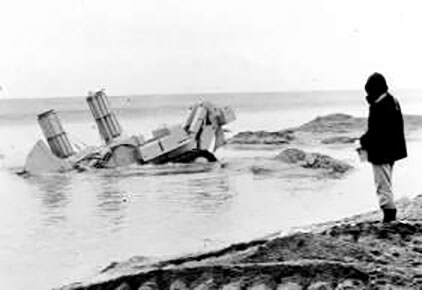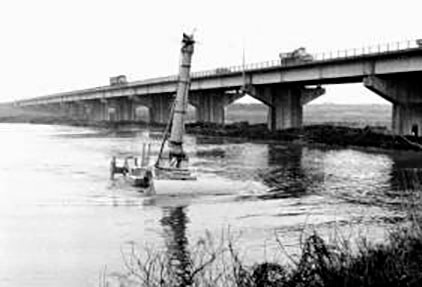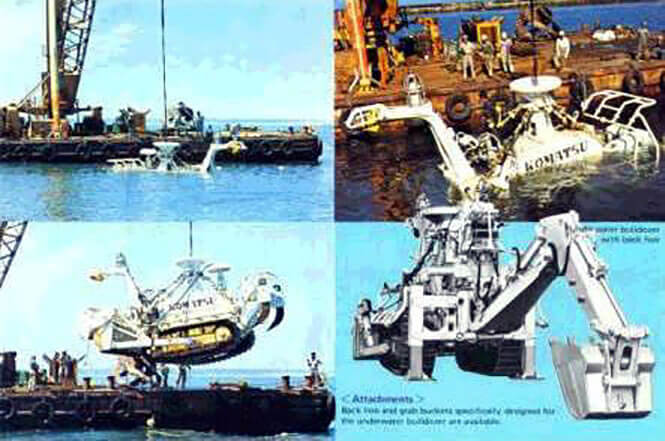1960
Liberalization of trade brought Japan demand from abroad and the opportunity to raise Japan's technological advancements to a world-class level. The introduction of large-scale power sources took place, which accelerated development of larger equipment.

This was the world's first amphibian bulldozer developed for the purpose of digging bedrock and removing sludge from the bottom of a river. Its technology is based on the crewless bulldozer that was put into use in the previous year.
Two funnels were attached to the sealed engine and radiator that allowed intake and exhaust. Its blade had an apron that prevented spillage of sand in the water. The early models could go as deep as 3m in the water.
Weight: On land: 36000kg, In water: 25000kg
Range of remote radio operation: 50m

The radio controller featured in the brochure back then.

Later Komatsu developed a model that could go the depth of 7m. The funnel needed to be extended by 4m compared to the previous model that went down to the depth of 3m. From both appearance and strength aspects, the number of funnels for intake and exhaust changed from one from two, and it was also foldable so that it could be driven under bridges.

During this era, Komatsu also developed "deep water machinery" that could go as deep as 60m. It was not put into actual use back then, however, the technology was later used to develop "stone leveling equipment" and "bedrock digging equipment".
Bulldozer
Since its first emergence in 1951, it took only 50 years for the hydraulic shovel to establish its primary position on construction sites worldwide. Its size ranges from mini to super size depending on the scale of construction, and during the half century, it kept evolving by achieving a minimum rear-swing radius and adapting styles that would work with characteristics of each site. Mirroring the movement of a human hand, a hydraulic shovel will continue to evolve during the 21st century.